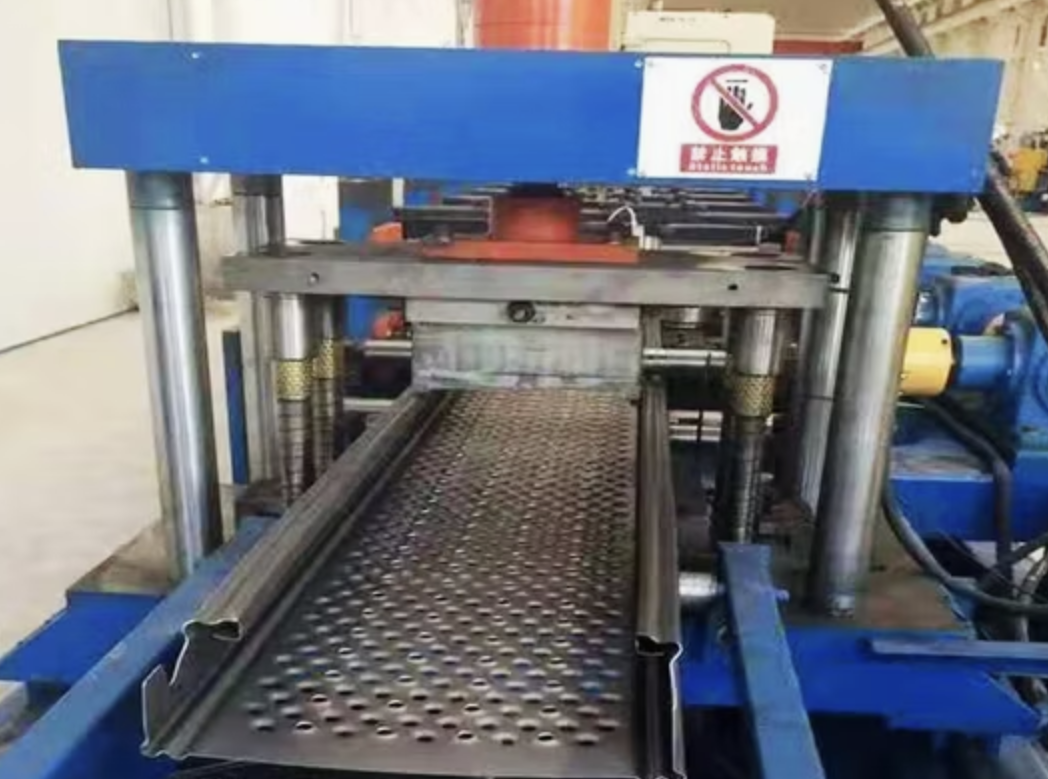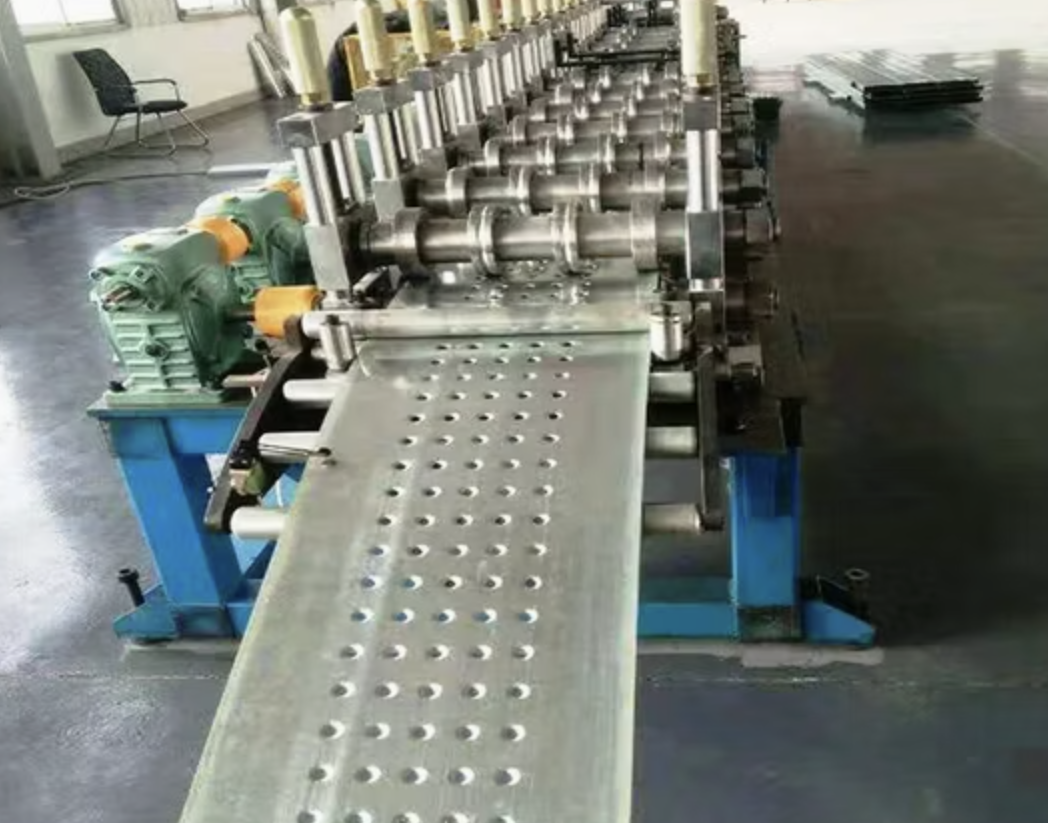To express an interest in this machine please submit the form below.

Not Sure What Machine You Need?
Select Your Profile, We'll Match It
Choose your desired profile drawing, and let Machine Matcher connect you with the best roll forming machine tailored to your needs.
Browse Profiles


A Scaffold Platform Roll Forming Machine is designed to produce steel platforms used in scaffolding, which serve as working surfaces for construction personnel. These platforms provide a stable and secure foundation, enhancing safety in construction projects. The machine ensures that scaffold platforms are manufactured with precision, durability, and consistency, meeting the safety and structural standards required in construction.
Scaffold platform roll forming machines are engineered to handle heavy-duty materials like galvanized or stainless steel. They produce scaffold platforms with anti-slip surfaces, cutouts, or punched holes for grip, which are essential for worker safety. These machines are highly automated, allowing manufacturers to produce large quantities of scaffold platforms with minimal manual intervention. They come with advanced programmable logic controllers (PLCs) for accurate and customized production.
Setting up the scaffold platform roll forming machine requires professional technicians who are familiar with industrial machinery. The setup includes installing the machine, connecting the power supply, calibrating the PLC, and testing the punching, notching, and cutting systems. Proper training for operators is essential to ensure safe and efficient machine handling.
Routine maintenance involves checking the rollers, lubrication systems, and hydraulic units to prevent wear. Periodic inspection of the PLC system, cutting mechanism, and safety guards is also necessary. Following the manufacturer’s recommended maintenance schedule will help prolong the machine's life and maintain its production accuracy.
Q: What types of materials can the scaffold platform roll forming machine handle?
A: The machine primarily handles galvanized steel, stainless steel, and carbon steel, ideal for scaffolding platforms due to their durability and corrosion resistance.
Q: How does the punching system work in this machine?
A: The machine uses a hydraulic or pneumatic punching system to create anti-slip holes or patterns on the scaffold platform surface, ensuring safety for workers.
Q: What is the typical production speed of a scaffold platform roll forming machine?
A: Production speed can reach up to 15-20 meters per minute, depending on the material thickness and punching complexity.
Q: Can the machine produce scaffold platforms of varying lengths?
A: Yes, the integrated PLC allows operators to adjust the platform length and hole positions according to specific requirements.
Q: What additional features can be included with the scaffold platform roll forming machine?
A: Optional extras include stackers, remote PLC systems, coil car tippers, and automatic uncoilers, which enhance productivity and operational efficiency.
Q: Is this machine suitable for high-volume production?
A: Absolutely. The scaffold platform roll forming machine is designed for continuous, high-volume production, ideal for meeting large-scale construction demands.
Q: What are the maintenance requirements for this machine?
A: Routine maintenance involves checking and lubricating rollers, inspecting the hydraulic units, and ensuring the PLC and safety systems function correctly.
Copyright 2025 © Machine Matcher.